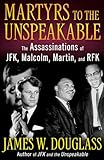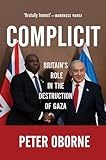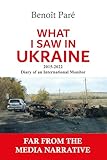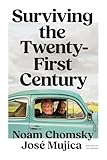If you believe Donald Trump might invade, you should be calling for Canada to withdraw from NATO. The alliance won’t defend Canada, has enabled US interference, and gobbles up resources.
During a recent meeting with NATO Secretary General Mark Rutte, US President Donald Trump questioned the border and Canadian sovereignty. He said, “if you look at a map, they drew an artificial line right through it, between Canada and the U.S. … somebody did it a long time ago, many many decades ago, and (it) makes no sense.” Trump also repeatedly said Canada should be a US state, noting “to be honest with you, Canada only works as a state.”
Sitting next to the US president, Rutte stayed silent. A bit later Trump suggested Rutte might assist him in taking part of NATO member Denmark, noting “I’m sitting with a man who could be very instrumental. You know Mark, we need that for international security.” Rutte replied, “when it comes to Greenland yes or not joining the U.S. I would leave that outside for me this discussion because I don’t want to drag NATO in that.”
Rutte doesn’t seem to want to commit even rhetorically to defending alliance members’ sovereignty. Even if Rutte had interrupted Trump and told the US president his comments were inappropriate, the idea that NATO would defend Canada from a US invasion is ridiculous. Latvia and Estonia will not send troops to repel a US invasion. Nor will France or the UK.
Will Canada send troops to defend Greenland if Trump takes it from NATO member Denmark? Does anyone think that would that be a good idea?
Article 5 of the NATO Charter is not clear on what collective defence entails. It says an attack against one member “shall be considered an attack against them all.” But it doesn’t stipulate what the response should be, noting only that each member state must take “such action as it deems necessary, including the use of armed force.” Article 5 has only ever been invoked after the September 11, 2001, attacks in the US.
In the past NATO has undercut Canadian sovereignty. Unbeknownst to most Canadians, NATO was employed by Washington to topple a government in Ottawa. When Prime Minister John Diefenbaker didn’t provide unconditional support during the October 1962 Cuban Missile Crisis, US President John F. Kennedy used NATO as part of a multifaceted effort to precipitate the downfall of his minority Conservative government. On January 3, 1963, the outgoing commander of NATO, US General Lauris Norstad, came to Ottawa on an unplanned visit in which he claimed Canada would not be fulfilling her commitments to the alliance if the country did not acquire nuclear warheads. It was part of a series of moves by the Kennedy administration to weaken Diefenbaker, which led to the fall of his government. During the subsequent election campaign, Kennedy’s top pollster, Lou Harris, helped longtime external affairs official Lester Pearson defeat Diefenbaker.
NATO continues to undercut Canadian sovereignty. It’s used to justify purchasing expensive offensive kit (think F-35s and surface combatant warships) that are a drag on resources. The alliance also undermines Canadian defence since it promotes a forward military posture. In recent years, Canada has participated in NATO maritime operations in the Baltic and Black seas. In 2018, Canada took charge of NATO Mission Iraq. About 200 Canadian troops were deployed there.
For the past eight years Canada has led a NATO battlegroup in Latvia. About 700 Canadian soldiers are stationed on Russia’s border. There are also Canadian troops elsewhere in Eastern Europe as part of NATO aligned deployments.
NATO has entangled Canada in, what former UK Prime Minister Boris Johnson labelled, a “proxy war” that has devastated Ukraine. Ottawa has donated over $4 billion in military assistance and $6 billion in other types of assistance in a bid to continue the fight until the last Ukrainian. While Russian violence is condemnable, NATO provoked the war through its interventionist, antidemocratic, moves.
When NATO promoted Ukraine’s accession to the alliance in 2008, most Ukrainians opposed joining. Subsequently, NATO countries supported the ouster of elected President Viktor Yanukovych who passed legislation codifying Ukrainian neutrality. As John Mearsheimer warned in 2015, NATO was “leading Ukraine down the primrose path and the end result is that Ukraine is going to get wrecked.”
Pro-NATO commentators generally ignore the alliance’s provocations. They oppose Donald Trump’s — who often says the quiet part out loud — bid to end the conflict in Ukraine. Simultaneously they’ve been upended by Trump’s crass attacks on Canada and have suddenly become wary of US power. While they’ve begun criticizing Canada’s military dependence on the US, they continue to support militarism and imperialism.
In a sign of the crisis faced by militarists, the opinion section of last Saturday’s Globe and Mail published a long article headlined “WANTED: NEW ALLIES: Successive Canadian governments have leveraged our close relationship with Washington to get the most out of our low defence spending. This long-standing approach cannot continue.” Next to it, the paper published Thomas Homer Dixon’s “If you want peace, prepare for war” and a column by a Royal Military College professor headlined “Canada needs to develop its own nuclear program”.
The militarists/imperialists can’t see an option outside of militarism and global hierarchy. Their calls to establish a NATO without the US is an excuse for more militarism and prolonging the conflict in Ukraine. It would do little to protect Canada.
While there may be an argument for developing a guerrilla type defence structure, membership in NATO undercuts this country’s moral standing. Canada’s best defence against an invasion is making sure hundreds of millions of people in the US and elsewhere know this country is not their enemy.
Image credit: GHY International











